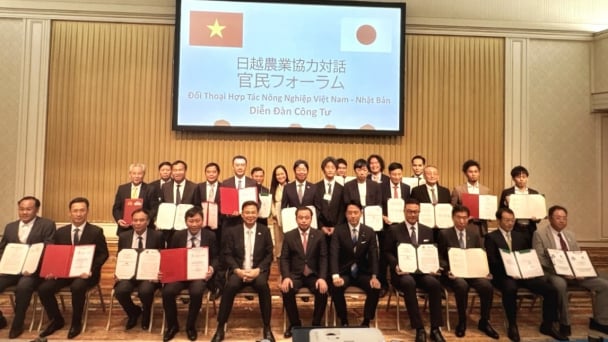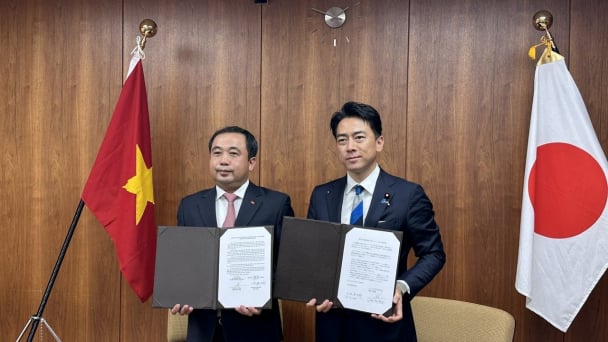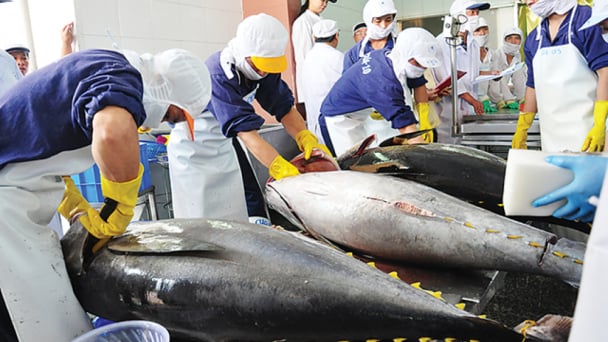September 5, 2025 | 19:00 GMT +7
September 5, 2025 | 19:00 GMT +7
Hotline: 0913.378.918
September 5, 2025 | 19:00 GMT +7
Hotline: 0913.378.918

Scientific and technological activities in the fisheries sector have recently made significant progress. Photo: Hong Tham.
Mr. Tran Dinh Luan, Director General of the Directorate of Fisheries and Fisheries Surveillance (Ministry of Agriculture and Environment), noted that science and technology activities in the fisheries sector have recently made significant progress, attracting domestic and international resources to comprehensively develop stages in the value chain of key products. These include: applying biotechnology in breeding, producing biological products, some aquafeeds; applying high technology in intensive and super-intensive aquaculture; adopting energy-saving solutions and environmental monitoring in aquaculture; and applying advanced technologies in disease prevention and treatment.
Research and improvement of fishing gear and equipment to support technical exploitation processes for production; applying selective fishing gear to protect and restore aquatic resources; and adopting processing lines for value-added products that ensure food safety.
Sharing the orientation of science and technology for the fisheries sector in the near future, Mr. Luan said that efforts will focus on developing long-term scientific and technological programs and projects to research and breed aquatic species with fast growth, disease resistance, and strong adaptability to unfavorable environmental conditions, meeting the requirements of industrial farming.
Research, application, and development of advanced farming technologies, digital technology, artificial intelligence (AI), and the Internet of Things (IoT) to save water and feed, ensure environmental sustainability, improve feed efficiency, reduce the use of antibiotics in aquaculture, ensure food safety, and cut greenhouse gas emissions in line with circular and green economy principles.
Develop research programs and technologies in seed production and commercial farming for potential species: concentrated and industrial marine fish farming with environmental sustainability; large-surface freshwater fish farming (rivers, reservoirs) on an industrial scale; high-quality seaweed seed production technologies; and establishing suitable cultivation processes in open-sea areas.
Develop epidemiological programs for aquatic diseases in economically valuable species, particularly emerging diseases in key farmed species; research and produce vaccines, aquatic veterinary drugs, and antibiotic alternatives; establish proactive monitoring protocols, effective disease prevention and treatment guidelines, and ensure food safety.
Apply AI to support disaster analysis and warning, climate change response, environmental protection, and epidemic prevention, creating conditions for sustainable development of the fisheries economy and the sustainable exploitation and use of aquatic resources.
Research and develop fishing technologies, mechanize and modernize fishing vessels with advanced seafood preservation systems, apply digital technologies to enhance value-added processing, reduce post-harvest losses, ensure food safety, and lower greenhouse gas emissions.

In recent years, Vietnam has participated in and signed many new-generation FTAs, opening up major opportunities for goods in general and fisheries in particular. Photo: Hong Tham.
However, technology is only half the journey. To expand development space, the fisheries sector also needs wide doors of integration – and new-generation Free Trade Agreements (FTAs) are the key. In recent years, Vietnam has participated in and signed multiple new-generation FTAs, opening up major opportunities for goods in general and seafood in particular.
The EU-Vietnam Free Trade Agreement (EVFTA): Negotiations began in June 2012 and concluded in December 2015. By June 2018, the EVFTA was split into two agreements: the EVFTA, which took effect in August 2020, and the EU-Vietnam Investment Protection Agreement (EVIPA), approved in June 2020. Chapter 13 on Trade and Sustainable Development contains specific provisions on trade and the sustainable management of marine biological resources and aquaculture products.
The Comprehensive and Progressive Agreement for Trans-Pacific Partnership (CPTPP): In 2009, Vietnam joined as a special observer. After three negotiation rounds, Vietnam officially became a negotiating member in 2010. Following more than 30 technical sessions and over 10 ministerial meetings, the Agreement was officially signed in March 2018 by 11 member states (excluding the United States) and entered into force on December 30, 2018. The CPTPP took effect in Vietnam on January 14, 2019.
The Regional Comprehensive Economic Partnership (RCEP – also known as ASEAN+6): Negotiations started on May 9, 2013, between ASEAN and its six existing FTA partners: China, South Korea, Japan, India, Australia, and New Zealand. On November 15, 2020, 15 member states (excluding India, which withdrew) signed RCEP, and it took effect for Vietnam on January 1, 2022.
The UK-Vietnam Free Trade Agreement (UKVFTA): Negotiations started in 2018 after the United Kingdom began its Brexit process. Both sides held six official negotiation rounds and five technical sessions between 2018 and 2020. The Agreement was negotiated based on inheriting commitments under the EVFTA, with necessary adjustments to suit the bilateral trade framework between Vietnam and the UK. Negotiations were officially concluded on December 11, 2020, and the Agreement was signed on December 29, 2020, taking effect on May 1, 2021.

Deputy Minister of Agriculture and Environment Phung Duc Tien and delegates visited booths at VietShrimp 2025. Photo: Hoang Vu.
These new-generation FTAs open vast market access, eliminate many tariff barriers, and serve as a driving force for Vietnam’s seafood industry to innovate toward greener, more transparent, standardized processes, and stronger competitiveness. They are considered a “quality passport” enabling seafood to deeply integrate into global value chains.
Beyond technology and FTAs, trade promotion also acts as a “bridge” to take Vietnam’s seafood further. In recent years, a series of major seafood fairs and exhibitions, both domestically and internationally, such as Vietfish, VietShrimp, the China Fisheries & Seafood Expo, the Brussels Seafood Expo Global (Belgium), and the Boston Seafood Expo North America (United States), have provided opportunities for Vietnamese enterprises to promote their products, directly connect with importers, and capture consumption trends and new standards.
It is clear that technology is the internal strength, FTAs are the gateways to integration, and trade promotion is the bridge to markets. Together, these three pillars form a stable “tripod” that enables Vietnam’s seafood industry to break through in the new era.
The overall picture of Vietnam’s seafood sector is one of both great potential and considerable challenges. From shifting from capture to aquaculture, marine conservation, market diversification, promoting green production, applying technology, and leveraging new-generation FTAs – all these factors are converging into a strong momentum for a new phase of development.
Translated by Huong Giang

(VAN) On the afternoon of September 4, the 'Vietnam–Japan Public–Private Agricultural Cooperation Dialogue' forum was held in Tokyo, Japan.

(VAN) The two ministers affirmed that, in a world facing numerous challenges, Vietnam–Japan agricultural cooperation is more strategically significant than ever.

(VAN) Planting area codes have become a ‘passport’ enabling Tuyen Quang’s agricultural products to cross borders and conquer demanding markets worldwide.
/2025/09/04/0437-2-145633_799.jpg)
(VAN) Deputy Minister Phung Duc Tien has directed drastic measures to address institutional, planning, and market bottlenecks in order to meet growth targets for the remaining four months of the year.

(VAN) An estimated USD 200 million worth of seafood from 12 fisheries that fail to meet U.S. Marine Mammal Protection Act (MMPA) is at risk of being banned from import into the U.S.

(VAN) The Governments agreed to further promote Vietnam-Cuba cooperation, linking it with production self-reliance and food security.